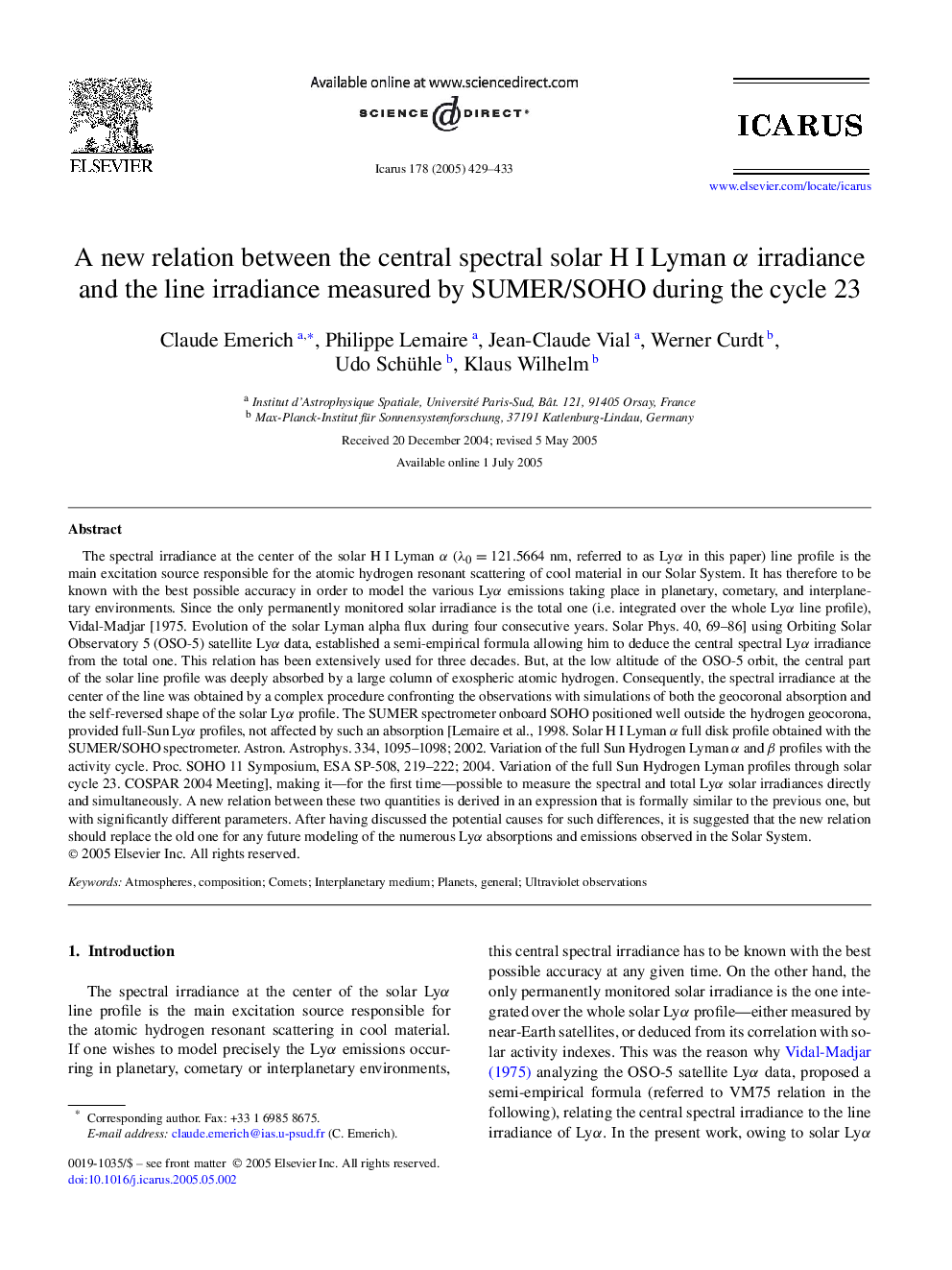| Article ID | Journal | Published Year | Pages | File Type |
|---|---|---|---|---|
| 10701841 | Icarus | 2005 | 5 Pages |
Abstract
The spectral irradiance at the center of the solar H I Lyman α (λ0=121.5664nm, referred to as Lyα in this paper) line profile is the main excitation source responsible for the atomic hydrogen resonant scattering of cool material in our Solar System. It has therefore to be known with the best possible accuracy in order to model the various Lyα emissions taking place in planetary, cometary, and interplanetary environments. Since the only permanently monitored solar irradiance is the total one (i.e. integrated over the whole Lyα line profile), Vidal-Madjar [1975. Evolution of the solar Lyman alpha flux during four consecutive years. Solar Phys. 40, 69-86] using Orbiting Solar Observatory 5 (OSO-5) satellite Lyα data, established a semi-empirical formula allowing him to deduce the central spectral Lyα irradiance from the total one. This relation has been extensively used for three decades. But, at the low altitude of the OSO-5 orbit, the central part of the solar line profile was deeply absorbed by a large column of exospheric atomic hydrogen. Consequently, the spectral irradiance at the center of the line was obtained by a complex procedure confronting the observations with simulations of both the geocoronal absorption and the self-reversed shape of the solar Lyα profile. The SUMER spectrometer onboard SOHO positioned well outside the hydrogen geocorona, provided full-Sun Lyα profiles, not affected by such an absorption [Lemaire et al., 1998. Solar H I Lyman α full disk profile obtained with the SUMER/SOHO spectrometer. Astron. Astrophys. 334, 1095-1098; 2002. Variation of the full Sun Hydrogen Lyman α and β profiles with the activity cycle. Proc. SOHO 11 Symposium, ESA SP-508, 219-222; 2004. Variation of the full Sun Hydrogen Lyman profiles through solar cycle 23. COSPAR 2004 Meeting], making it-for the first time-possible to measure the spectral and total Lyα solar irradiances directly and simultaneously. A new relation between these two quantities is derived in an expression that is formally similar to the previous one, but with significantly different parameters. After having discussed the potential causes for such differences, it is suggested that the new relation should replace the old one for any future modeling of the numerous Lyα absorptions and emissions observed in the Solar System.
Related Topics
Physical Sciences and Engineering
Earth and Planetary Sciences
Space and Planetary Science
Authors
Claude Emerich, Philippe Lemaire, Jean-Claude Vial, Werner Curdt, Udo Schühle, Klaus Wilhelm,
